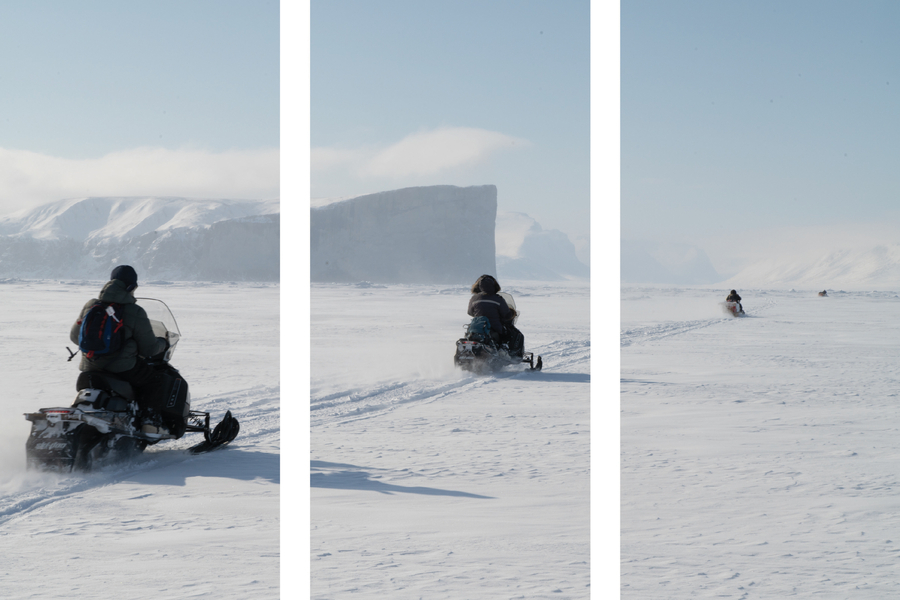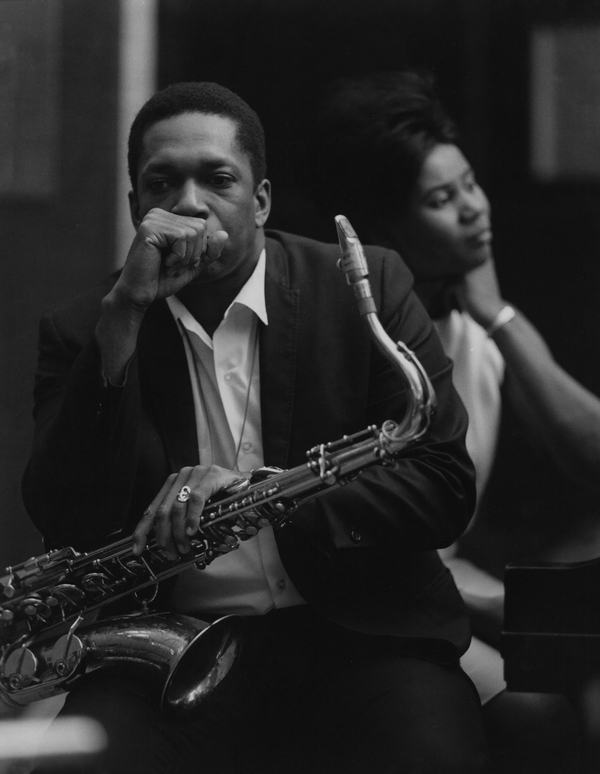 Robert Kautuk (1984, Frobisher Bay [Iqaluit], NU - ), A Daily Drive, 2019. Courtesy of the Artist
Robert Kautuk (1984, Frobisher Bay [Iqaluit], NU - ), A Daily Drive, 2019. Courtesy of the ArtistInuk photographer Robert Kautuk veers slightly off the snowmobile trail to capture his striking low-angle shot titled A Daily Drive (2019), a photograph that showcases the vastness of the Arctic landscape. This image not only reflects the beauty of the region but also serves as a gateway into the artist’s broader practice. Photography is intricately woven into Kautuk’s daily life, as he documents the moments, activities, and scenes that shape his experiences. His work is deeply rooted in the land and community of Kangiqtugaapik (Clyde River), his hometown, and Iqaluktuuttiaq (Cambridge Bay), where he lives part time, and it serves as a vivid record of life in the North. Whether using drones to provide bird's-eye views or carefully framing scenes from the ground or water, Kautuk’s photographs emphasize light, composition, and perspective.
The composition of A Daily Drive is particularly striking, especially so when divided into a triptych, in this case, as three large-scale banners, presented on the façade of the Peel Art Gallery, Museum and Archives. Three snowmobilers, one on each panel, ride in a straight line, creating a powerful sense of movement into the distance of a vast expanse. The visual progression, moving from bottom left upward toward the right across the panels, also draws attention to the passage of time, and speaks to the interconnectedness of individual experiences. While each rider is visually separated within their own panel, they are united in their shared direction and purpose, highlighting the collaborative nature of life in the Arctic. This sense of interconnectedness is further emphasized by the monumental size of the artwork, which engulfs the viewer and places them within the boundless terrain, suggesting that we, too, are part of this interconnected system.
The journey that inspired this work was not merely a photographic expedition; it was part of a routine maintenance trip to the Akuliaqattak and Nattiqsujuq weather stations. These stations play a crucial role in monitoring the Arctic’s increasingly unpredictable climate, providing invaluable data on hourly sky conditions, air temperature, wind direction and speed, humidity, pressure, and ground temperature. These stations are part of the Silalirijiit Project, a collaborative initiative active between 2009 and 2023 that involved local hunters, Elders, and researchers. The program also focused on mentoring Inuit youth, imparting weather-related knowledge and land-based skills. Together, they worked to monitor and understand the Arctic’s changing climate, collecting invaluable atmospheric data.
Kautuk’s photography contributes to a larger narrative about the Arctic’s transformation under the weight of climate change. The Arctic is warming at a rate three times faster than the global average, resulting in dramatic shifts in weather patterns, ice conditions, and ecosystems. This not only disrupts the environment but also Inuit ways of life, which are intimately tied to the land, water, and ice. Through his photography, Kautuk documents these shifts, balancing a celebration of the Arctic’s beauty with a poignant awareness of its severity and fragility.
Kautuk’s journey to maintain the weather stations is emblematic of a broader commitment to preserving the Arctic environment and culture. His photographs serve as both a record and a call to action, urging viewers to recognize our interconnectedness and the urgency of addressing the climate crisis. Through his lens, Kautuk invites us to see the Arctic as a vital part of our shared planet, deserving of care and respect.
Presented in partnership between the Peel Art Gallery, Museum and Archives (PAMA) and the Ottawa Art Gallery (OAG) and CONTACT Photography Festival
Curated by Rebecca Basciano, Chief Curator, Ottawa Art Gallery











































